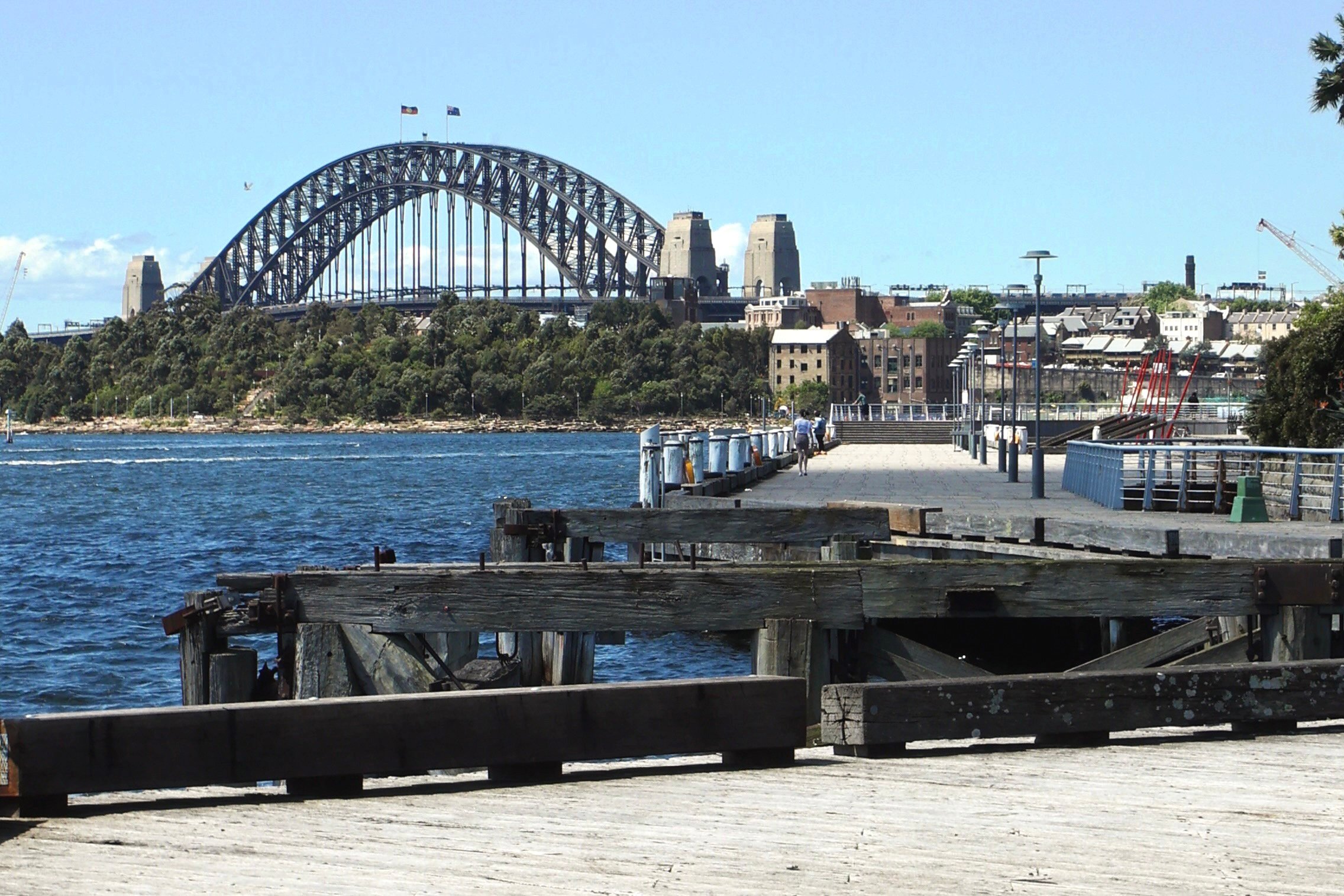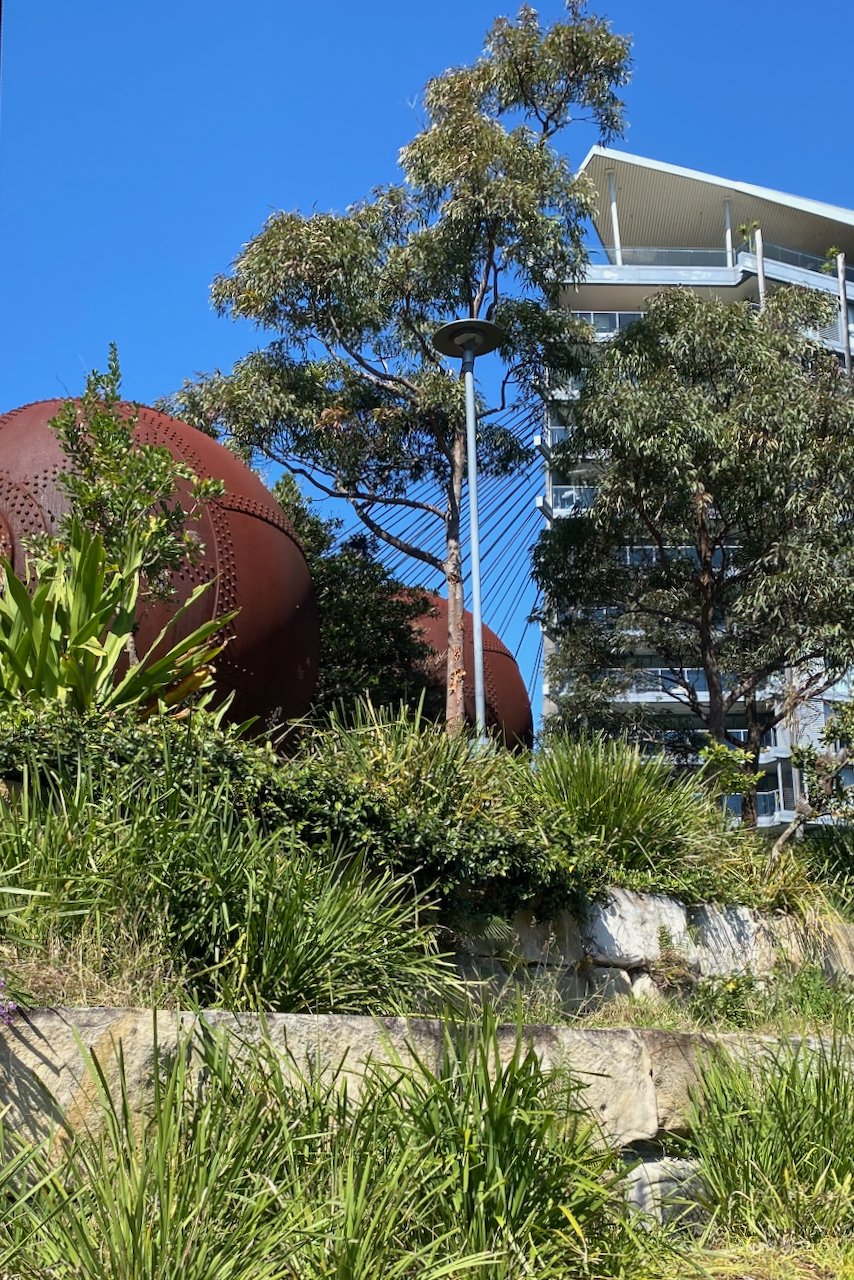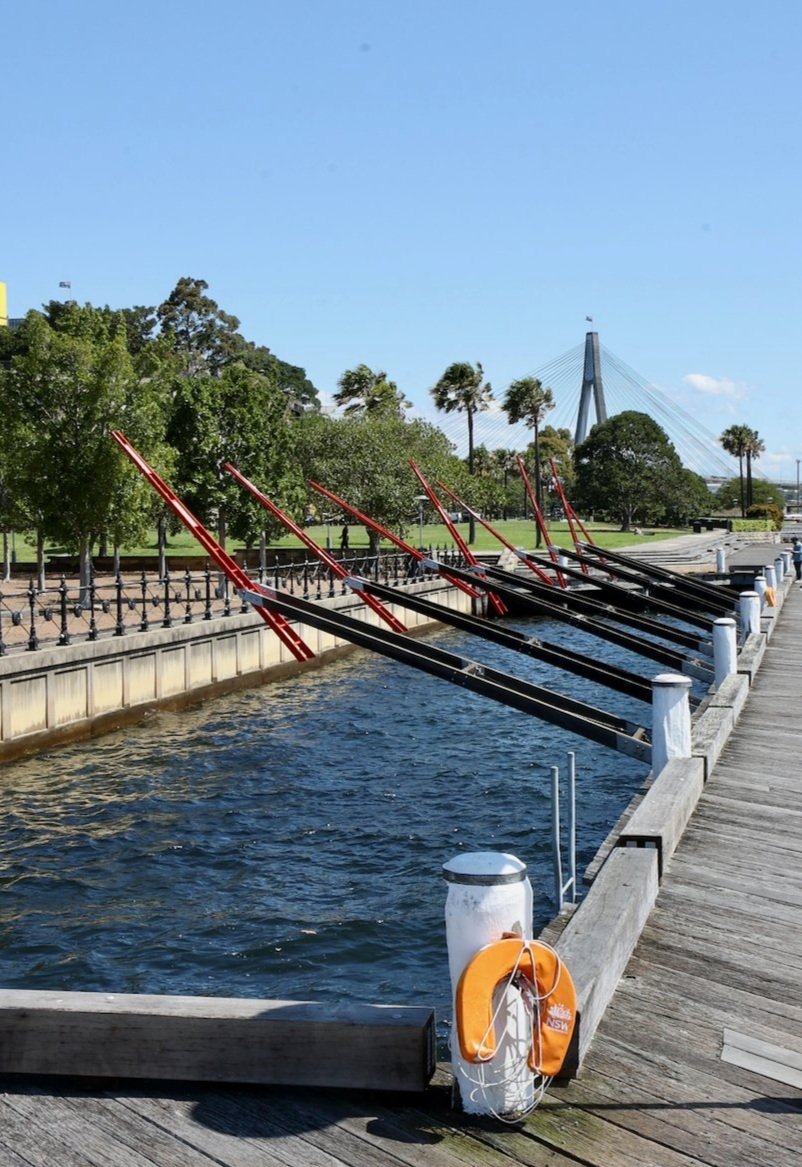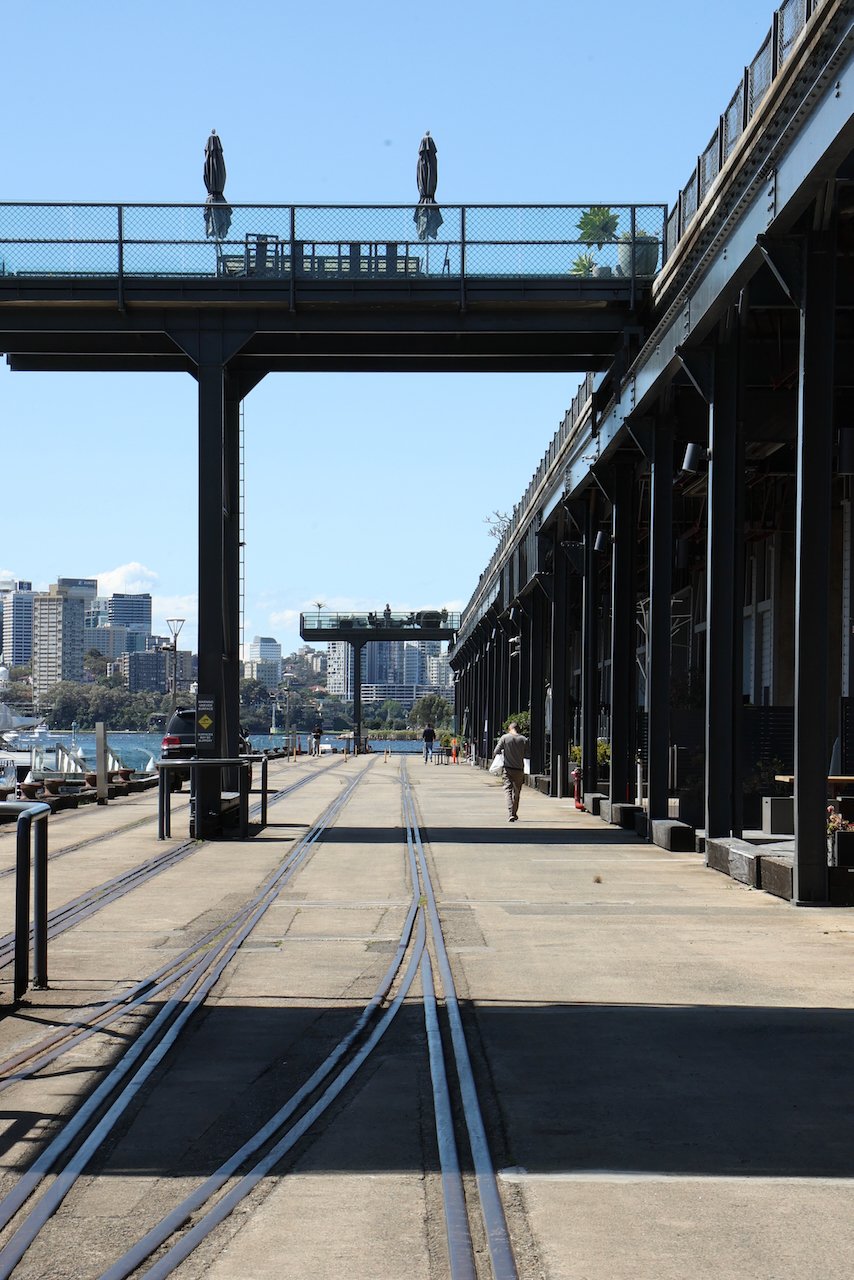Pymont Foreshore walk
This is a great waterside stroll through areas formerly crowded with industry and largely inaccessible. The pathway around the harbour is now peppered with parks, playgrounds and picnic areas with plenty of places to stop for a bite and take in the harbour views.
To start
The walk begins and ends at the (soon to be relocated) Sydney Fish Markets. There is paid parking in the markets car park and along Bank Street. Alternatively, the light rail from Central stops just up the road.
Walk to end of Bank St where it turns into Bowman St and take the pedestrian pathway on your right that leads down to the waterfront.
The Anzac Bridge looms large on your left as you turn to take the path along the water. In front of it sits the swing and control house of the Glebe Island Bridge which it replaced in 1995.
Waterfront Park
Waterfront Park has a small playground, picnic and barbecue area. This apartment complex above the park was built in the 90’s and is known as Jacksons Landing.
If you’re wondering what the big balls are at the top of the park, they are Caneite defibrators, formerly used by CSR in the production of cane-ite building board. The Colonial Sugar Refining Company operated in Pyrmont for about 100 years and had a huge influence on the landscape of the Pyrmont area.
In 1870, CSR began refining sugar in Pyrmont and from modest beginnings, it grew to be a powerhouse of industry and the single largest employer in the area. The refinery produced not only sugar but bi-products like syrup and molasses and later, alcohol. In the war years It turned to the production of armaments. After the war CSR further diversified and began making lightweight building materials like caneite.
In 1995, after operations were moved to other areas, CSR’s industrial site was sold to Lend Lease who developed the area into what you see today.
Pirrama Park
The access and amenity around this foreshore park provide a great example of what can happen when people get together to campaign for the greater good.
This area, once home to wharves and heavy industry was, most recently, the headquarters of the Sydney Water Police. When the police secured a new site for their activities in the early 2000’s, a high-rise development not unlike the one next door was planned for this site. But locals were strongly opposed and in 2003 a spirited community campaign opposing the plans got underway. The campaign was ultimately successful and in 2005, the City of Sydney acquired the land and preserved it as public recreational space.
Pirrama Park was officially opened in 2010. It has BBQs and picnic tables, cafes and public art. There is also a large playground catering to the growing number of young families in the area.
The Stevedore Walk, which runs alongside the water, commemorates the maritime workers and industries which were based on and around the site.
A kink in the boardwalk marks the spot where the popular Pyrmont Public Baths operated from 1877 until 1945.
The sculpture Tied to Tide was installed here in 1999. It’s kinetic movements reflect the changing tides and prevailing winds. The timber used in its creation was taken from the old Goldsbrough Mort wool stores in Pyrmont.
Jones Bay Finger Wharf
The wharves at Jones Bay were constructed in the early twentieth century to help manage growth in the export of wool, wheat and other produce from New South Wales. A direct railway line onto the wharf and purpose built cranes and gantries meant cargo could be moved quickly.
As well as cargo, Jones Bay Wharf has also facilitated the swift movement of a large number of people. In the war years, tens of thousands of troops came in by rail and set off from here, and in the years following many migrants disembarked here.
Today the wharf is home to the large function centre, Daltone House as well as a number of dining and commercial office spaces. You’ll see though as you walk around the wharf, that remnants of its working past are still in evidence.
Darling Island
Still known as Darling Island this peninsula’s island status has long past. It is one of a number of islands in the harbour that have been reclaimed and are now part of the mainland.
The ‘island’ has had many uses since it was first developed for shipping in the mid 1800’s. Like the finger wharf beside it, it has served as a handling station for wheat, coal, wool and other cargo. and as a passenger terminal for migrants in the post war years.
Darling Island is now a mix of residential, commercial and public use buildings. A few early buildings remain including the prominent red brick, heritage listed former Ordinance Stores of the Royal Edward Victualling Yard. Built between 1902 and 1912, The REVY as it is now known, has been converted into a luxury apartment block.
The REVY, Darling Island
Also on this peninsula are two small parks, Ballaarat and Metcalfe, both with grassed recreation areas and scenic views of Darling Harbour and the city skyline. There is also a small wharf catering to clients of the nearby Star Casino.
Pyrmont Bay
Turn left to Pyrmont Bay Park just beyond the wharf on Pirrama Road, opposite the casino. The pathway through the park will lead you down toward Pyrmont Bay and The Australian National Maritime Museum.
Designed by renowned local architect Philip Cox the museum was built in 1991. Its footprint includes the waterfront leading around from the ferry wharf where a number of the museum’s vessels are moored.
Taking the foreshore path, you’ll pass the 100 metre long Welcome Wall where the names of thousands of migrants are inscribed.
If you have time to visit the museum it’s worth the $25 entry fee, even if you’re not a big naval fan. Entry gives you access to a number of permanent and temporary exhibitions and the opportunity to board some of the historic vessels, including a replica Endeavour and naval destroyer, HMAS Vampire.
Just beyond the museum is the Pyrmont Bridge the rurn around point for this walk.
Pyrmont Bridge was built in 1902 to replace the old one that had stood since 1857. The bridge was been closed to traffic in 1982 but retained as a pedestrian footpath. It was declared a National Engineering Landmark in 1992.
Standing on the bridge, to one side you can see over to Barangaroo and on the other side to Darling Harbour. Both are worth exploring further if you want to continue that way.
The return
To return to the start head up to Pyrmont Bay Road and follow it all the way to bank Street and the fish markets. Alternatively, If you have the time and would prefer to look at water rather than traffic, head back the way you came.
If you’re short on time or energy, the light rail will take you back as far as the fish markets in less than ten minutes.


















